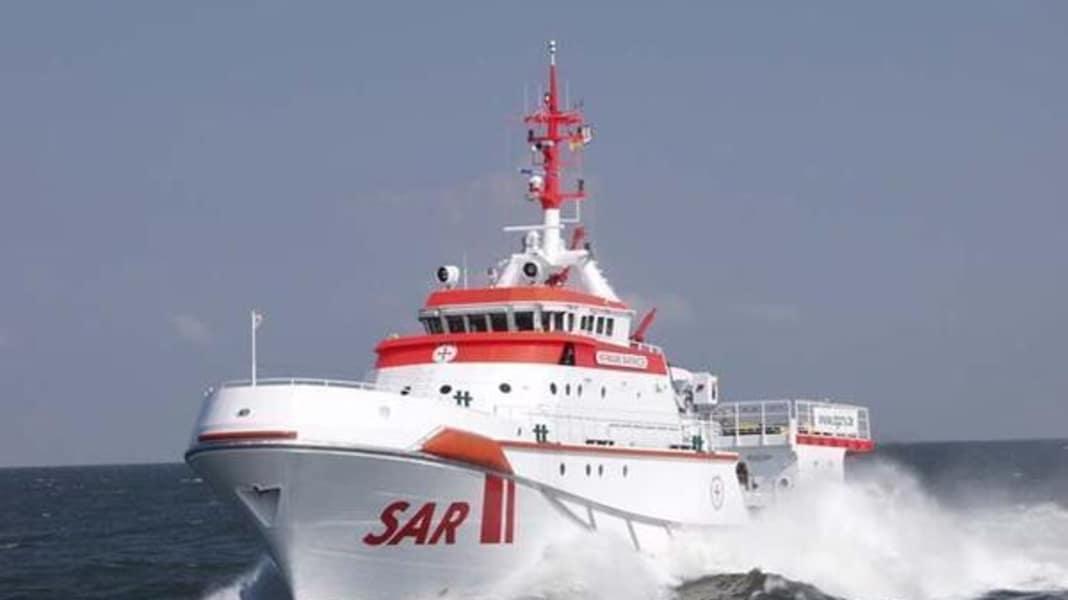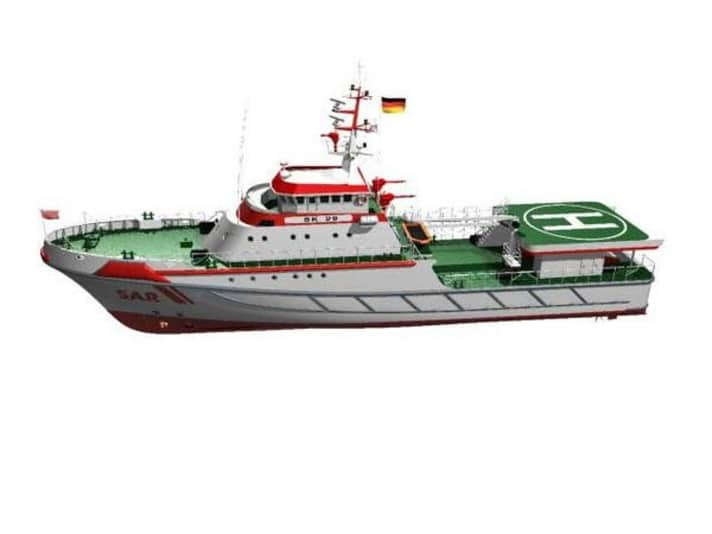
After a two-year planning phase, an equally long construction period and 60 days of successful trials, the largest and most modern German rescue cruiser was put into service by the German Maritime Search and Rescue Service (DGzRS) "Hermann Marwede" on Heligoland on Tuesday.
"11.30 a.m. firmly on station Helgoland. Clear P 3!" on Tuesday, 9 September 2003, the DGzRS rescue cruiser "Hermann Marwede" reported by radio from its position in the southern harbour on the high seas island of Helgoland, thus officially taking up its duties in the German Bight.
Now the ship and crew will begin their daily routine on board the DGzRS station at the red rock. Operations for commercial and leisure shipping will characterise the work of the rescuers on board the ship, alongside patrols.
In the presence of numerous representatives of public life, Michael Grobien, Deputy Chairman of the DGzRS, officially handed over the rescue cruiser to her new owner. In front of the station building in the southern harbour, he quoted from the greeting sent by the patron of the DGzRS, Federal President Johannes Rau, on the occasion of the christening:
"The DGzRS is one of the most modern sea rescue services in the world Your great achievements are above all thanks to the rescue men and women and all those on land who ensure that the operations run smoothly I am certain that the DGzRS is well prepared for the challenges ahead. It will continue to ensure that modern technology offers rescuers the greatest possible safety and optimum conditions for providing assistance. The new rescue cruiser demonstrates this once again," said the Federal President.

With the "Hermann Marwede", the DGzRS is preparing for new challenges in good time. According to climate researchers' forecasts, more extreme weather conditions must be expected in our latitudes in the future and the sea will become rougher. Transport experts, on the other hand, assume that maritime traffic will continue to increase in almost all its facets. This applies not only to passenger shipping, but also to the transport of hazardous goods in the North and Baltic Seas, for example.
With the new ship, the DGzRS is today putting into service the largest and most powerful rescue cruiser in the 138-year history of the rescue organisation: 46 metres long, more than 9,200 hp (distributed over three engines), 25 knots fast. It also has a fire-fighting capacity with a total output of around 42,000 litres of water per minute.
The man who gave his name to the new rescue cruiser, Hermann Marwede, who was born in Bremen in 1878 and died there in 1959, was a personally liable partner of the Beck & Co brewery for around 50 years. Twelve of Hermann Marwede's grandchildren and great-grandchildren made a significant contribution to financing the new building, which cost almost 15 million euros in total, with their donations.
